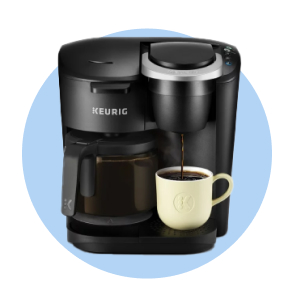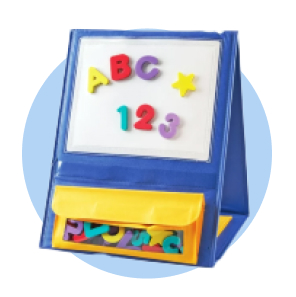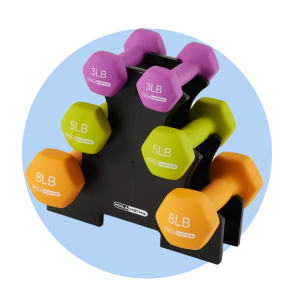
The Retail Professional's Year-End Checklist
Looking back to move forward
For retail owners and managers, the new year brings new challenges. You can meet them more easily by taking a moment to look back on everything you’ve accomplished in the previous year. From wrestling your finances into shape to reworking your physical footprint, here are the key steps your retail operation should take at the end of the year.

Mastering the money
Reconcile accounts receivable & payable
The end of the year is a great time to pore through invoices and make efforts to close out your books. When you do, you gain the ability to quickly assess your business’s financial health. With your books tidy, you’ll also get clarity about any loose ends you still need to chase down. Make sure to follow up on any outstanding invoices, whether they’re owed to you or you owe them to a vendor. That can give your cash flow a healthy injection and make sure you start the year with as clean a slate as possible. Having your accounts in order also sets you up for a much easier tax season.
Review your inventory
Staying on top of your inventory offers plenty of benefits. When you understand how quickly stock sells, you can make more accurate forecasts around demand. Forecast correctly, and you can avoid the twin dangers of inventory mismanagement: waste caused by overstock and loss caused by stockouts.
As you close out the year, take a look back at your inventory trends. What were your top sellers over the course of the year, and how often did you need to restock them? By examining the ebbs and flows of demand, you can dial in your orders for the new year.
Next, take inventory of everything you have on hand. Record both quantities and dollar values for each item. You can then use those numbers to generate a total value for your inventory and add it to your financial records. If you’re not already using one, consider adopting an automated inventory tracking system.
For more tips on managing your inventory, read Small Business Inventory Software: 7 Features to Prioritize.
Prepare for tax season
Save yourself some stress—start your taxes early. When the year is winding down, take the time to collect the documents and information you’ll need to make the filing process a breeze. Store all of these documents in one well-organized location to make them easy to access.
Here’s a list to help you get started:
Last year’s tax returns
Your bank account and credit card statements
Your accounting ledgers
Any financial statements
Your invoices
Receipts for business expenses
Employee and non-employee tax forms
Your federal tax ID and Social Security numbers
You can also take some time to learn and implement tax saving strategies, which tend to fall into two categories:
Tax deductions reduce how much of your income can be taxed. That can move you into a lower tax bracket and thus change the rate at which you’re taxed. For example, retail businesses can often deduct the cost of inventory or rent. You can learn more about that on the IRS website.
Tax credits cut down the amount of tax you owe at a dollar-for-dollar rate. You can see that in action with the Work Opportunity Tax Credit, which can knock up to $2,400 off your tax liability for each full-time hire you make that meets the credit’s requirements.
Taking the time to learn your options and collecting the right documents can add up to major savings.
Run financial reports
Reports are the best way to get a top-down view of your business’s financial health. There are three you should pay particular attention to.
Balance sheets show all the assets and liabilities your business holds. Combining the dollar values for both tells you how much your business is worth in total.
Cash flow reports show you how quickly money moves through your business. Having a positive cash flow is a great sign that your business is stable and could handle an unexpected challenge. If your cash flow is negative, you may be at risk.
Profit and loss statements show you the bottom line: how much money came in, and how much money went out. If you see higher profits than expected, now may be a great time to invest in the business. On the other hand, lower-than-expected profits could be a sign that you need to work more efficiently.
For more tips on saving as a small business, read Small Business Financial Tips: 5 Ways to Save More and Stress Less.

Powering performance
Take stock of staffing
Your employees are the engine that powers your business. The end of the year is a good time to make sure their compensation and benefits are still competitive. Where staff have managed to overperform, consider offering raises, holiday bonuses or promotions to keep them happy and productive.
Think about each staffer’s workload over the past year. Are they buckling under too much work? Do you have the budget to hire some more helping hands? Alternatively, has business slowed down to the point that staff run out of things to do? A clear-eyed assessment now can make or save you money down the line.
Examine your layout
How you arrange your store can affect how well it performs. Think about how supermarkets place milk, eggs and other essentials at the back of the store. If shoppers want the most popular items, they have to pass a bunch of other options along the way. The longer that distance, the more chances they have to pick up additional purchases.
Different product categories will thrive with different layouts. Where a grid plan may work for a hardware store, an independent fragrance boutique may do better with a free-flowing layout. Think about how you want your store to feel to customers, and rearrange it to help evoke that feeling.
To learn more about store layouts, read How to Build a Retail Space to Reel in Customers.
Assess your marketing strategy
Dive into your current marketing strategies and the campaigns supporting them. Wherever possible, collect data on their effectiveness, such as leads generated, website visits, return on ad spend (ROAS) and so on.
Take a long hard look at this data. How much revenue can you attribute to each of your strategies?
When you’re done analyzing, you can start to evaluate. Identify the strategies that succeeded and those that didn’t, and then try to determine why. The answers will help you double down on what works and adjust what doesn’t in the new year.
Keep learning with Walmart Business
As an owner or manager, there’s always more to learn about how to run a successful retail business. Keep honing your skills by reading insights from the Walmart Business content hub. There, you’ll find tips on marketing, tax preparedness, inventory management and plenty more.
Want more than tips and tricks? Make a free Walmart Business account and save money on everyday supplies. Upgrade to a Walmart Business+ membership and you get the same great supplies plus free shipping,1 delivery from local stores on orders over $352 and money back in the form of Walmart Business Rewards.3 All told, a membership could save you more than $500 a year.4 Click here to learn more.


Limited-time offer
Unlock your special promo code
Stay informed on Walmart Business news & get $20 off a $100 purchase!1
1Minimum order of $100. Promo code can be used one time & may not be combined with other offers. Offer not transferable & void where prohibited by law. Customer responsible for all applicable taxes. Offer expires 12/31/2025 at 11:59pm PT. Further restrictions apply. See terms at checkout for details. Promo code offers available in limited quantities. While supplies last.
1 Excludes most Marketplace items, freight and certain location surcharges.
2 Restrictions apply.
3 Rewards can only be used toward future purchases on Walmart Business. Additional terms apply.
4 Savings based on 1 free $35+ delivery order vs. $9.95 fee and 1 free shipping order under $35 vs. $6.99 fee biweekly, plus 2% Walmart Business Rewards on monthly order >$250 (average value of $400).
Exciting news awaits
Hear firsthand about new products, features & promotions.
By clicking submit, you agree to receive emails about Walmart Business and acknowledge you have read and agreed to our Terms of use and Privacy Policy.










